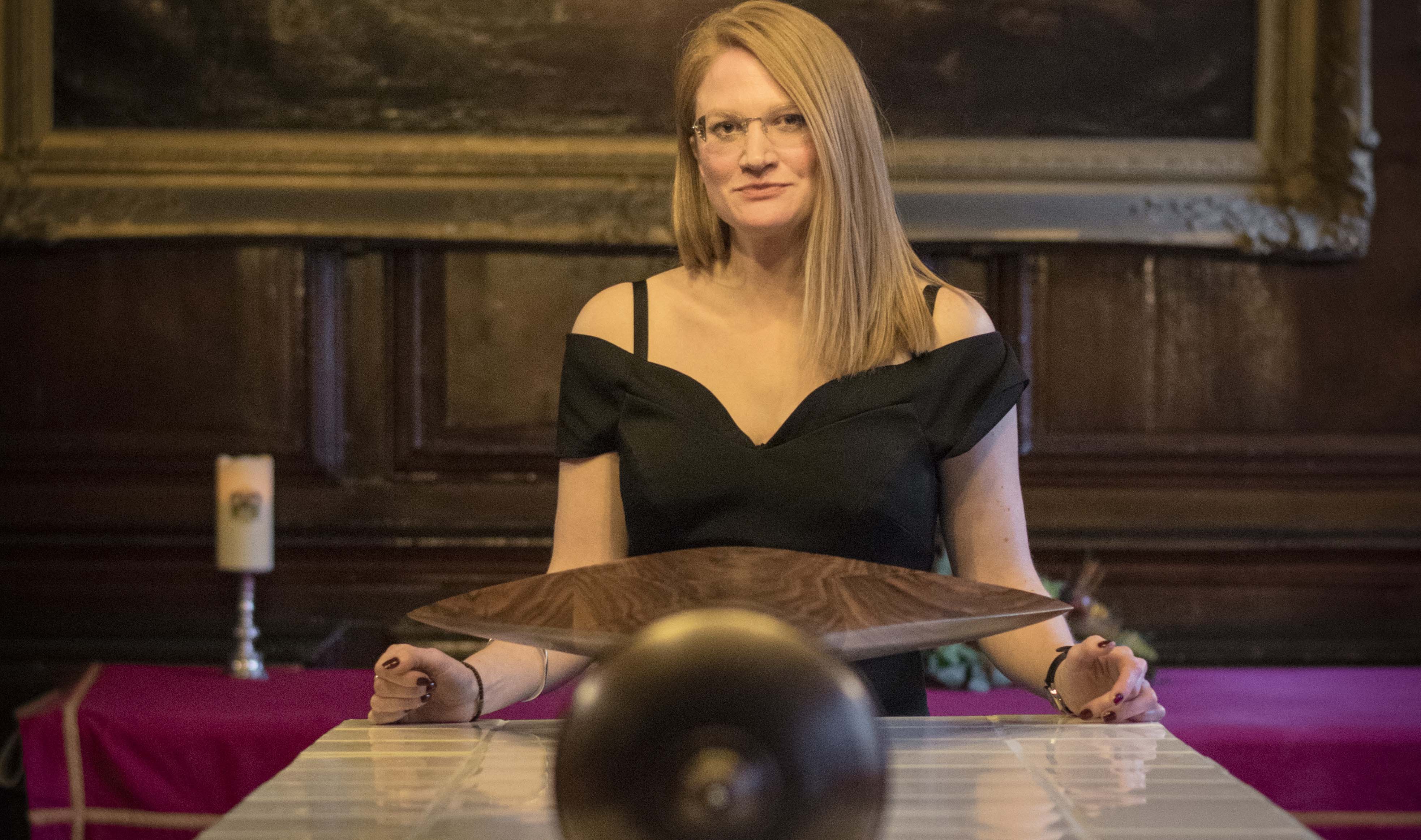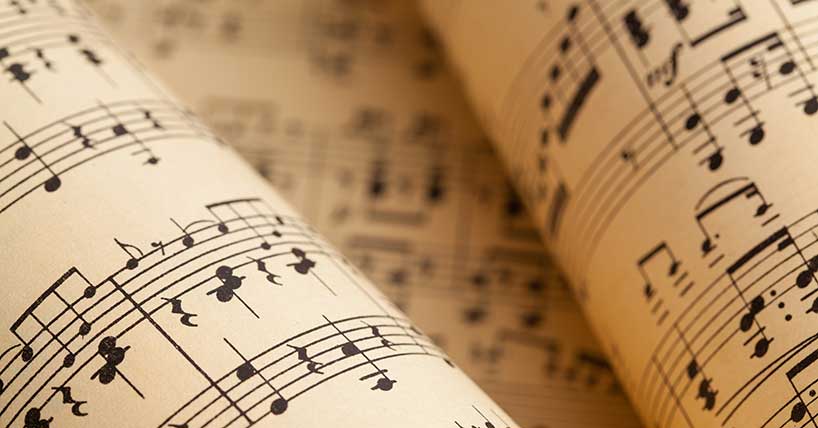Courting Power
New artworks evoke women’s history on Quayside
Published on: 14 September 2018
The history of one of Newcastle Quayside’s oldest buildings is the inspiration for two new artworks created by a Newcastle University student.
Artistic and scientific approaches
Johannah Latchem has created an atmospheric sound installation in the Guildhall courtroom, based around a real court case held there in July 1834. She has also made a new oar mace to mark the previous role of the building’s admiralty court. The grade I listed court was originally built in 1655 and also held the Assizes and the Mayor and Sherriff’s courts.
Johannah, who is studying for a PhD in Fine Art and History, has used both artistic and scientific approaches to make Courting Power, her work in the Guildhall.
“I was interested in what the acoustic analysis of the court might show us about how its architectural design made certain voices heard,” she explains.
“My work looks at courts, power and law and I’m interested in how female voices may have been silenced.
“When I was researching the history of the Guildhall, I found the case of Margaret Hebbron. Newspaper reports said that when she was sentenced her screams rang out and I thought this case was a way to explore these ideas and begin some technical experiments.”
Margaret Hebbron was sentenced to transportation to Van Diemen’s Land - now Tasmania, Australia for 14 years - for receiving a silver watch, in July 1834.
In Courting Power, Margaret’s scream is represented by tones that emulate a siren played from the dock, which is informed by acoustic analysis of the projection for a woman’s voice from that exact spot. Underwater sounds taken from an actual prison hulk mooring site in South Shields suggest the ship Margaret would have been transported on, while whispers can be heard around the room, interrupted by the noise of a judge’s gavel.
Johannah worked closely with Tim Shaw from Newcastle University‘s Culture Lab, who works with sound, and Gianluca Foschi from Archaeology, who undertook 3D scans of the room to understand the acoustics and design her installation.

Forgotten voices
The second artwork, Carry the Woman you Forgot, explores the impact on women of naval impressment - when men were forced to join the Royal Navy, recognising their forgotten voices.
Johannah has made a new court oar mace from solid walnut and silver as part of this event. An oar mace was traditionally placed on the bench when the admiralty court was in session and the original, which dates back to 1605, now resides at nearby Trinity House on the Quayside.
It was processed annually on Ascension Day from the court to the quayside and this pageant was repeated well into the 20th century.
Inscribed on a silver plaque, mounted on the blade of the oar, is a poem entitled The Message, giving voice to the women’s perspective and recognising their role in and their stories of impressment.
Written by Latchem, the poem was informed by letters from Mrs Margaret Taylor to her impressed husband in 1809, describing her efforts that successfully secured his release. The poem, recited by Louise Bainbridge conservator of Trinity House, is also presented as a sound work to accompany the inscription on the oar.
Johannah explains: “A plaque dedicated to Mrs. Taylor displaying the same poem will remain at the Guildhall marking the legacy of her and thousands of women like her whose voices went unrecognised”.
This show is sponsored by the Catherine Cookson Foundation, The Newcastle University Humanities Research Institute, and was supported by Apex Acoustics of Gateshead.
Courting Power is on show at the Guildhall between 12pm and 4pm on Saturday, 15 September. The oar created by Johannah Latchem as part of Carry the Woman You Forgot, will leave the Guildhall 3.30pm and be taken to Trinity House in a procession by uniformed ‘Brethren’ .



